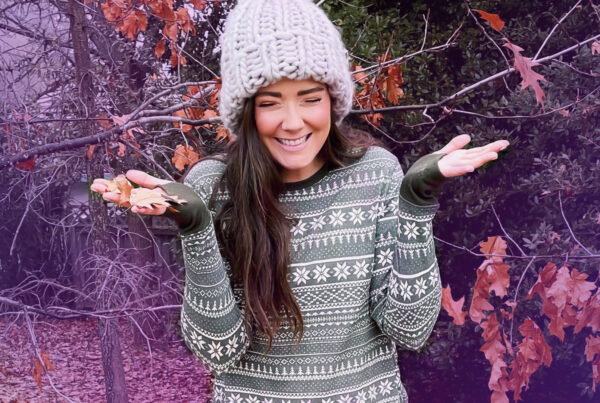Influencer marketing is a growing phenomenon in Australia, much like in many parts of the world. We recently conducted a 1,000-person survey, asking Australians their thoughts on influencer marketing to gather valuable insights about the market and consumers’ attitudes toward influencer-generated content.
IZEA’s Australia Trust in Influencer Marketing found that 46% of Australians have purchased a product after seeing an influencer promote it and 59% say they’re more likely to trust an influencer over a celebrity.
Want more insights? Here’s a breakdown of some of our biggest finds:
Does influencer marketing trump traditional forms of advertising?
For years, brands have relied on traditional means of advertising, like running ads on TV, radio, magazines, and social. Over the last few years, many Australian marketing teams have added influencer marketing to the mix. But, how does it stack up against “the staples” of advertising?
Take a look at the chart below. You’ll see that influencer marketing is a preferred marketing method, especially for the younger crowd.
Fifty-two percent of 18-to-29-year-olds say influencer marketing is the best way to get them to try a product. The next best way to reach this age group is through TV ads, but it’s a pretty far second, with just 25% of consumers calling it an effective way to recommend products.
You’ll notice that social, magazine, and radio ads barely move the needle with most age groups. Marketers are noticing the trend too. With declining ROI, ever-changing algorithms that make it hard to get your product in front of the right audience, and rising costs, marketers are looking for alternative ways to maximize their budget. As a result, brands have invested more money in influencers than social media, according to eMarketer.
What factors increase a consumer’s trust in Australian influencers?
Influencers build relationships with their followers, often resulting in something akin to a digital friendship. With each post, influencers share stories, experiences, and in return, followers trust their opinion. Through this relationship, influencers are able to sway purchase decisions.
But, trust isn’t a given. When asked, Australian consumers said these factors played the biggest role in building trust with creators.
Authenticity
Followers are looking for authentic content. They follow influencers because they relate to them, and in time, they get used to their tone, style, and values. As a result, followers know whether or not an influencer is authentically endorsing a product.
Given its importance to followers, it’s not surprising to see authenticity plays the biggest role in building trust between an audience and an influencer, according to our report.
Transparency
Forty-four percent of Australian consumers say transparency plays a role in trusting product recs from influencers, according to the chart above.
In many ways, consumers hold influencers to the same standards as they would a company. Followers expect influencers to be transparent. If an influencer decides to collaborate with a brand and endorse a product, consumers want the partnership to be clearly stated.
While it’s important to followers, disclosing brand partnerships is also mandated by the FTC.
Product use
Looking at the chart above, you can see that “product use” also encourages followers to listen to an influencer’s product suggestions. Research shows followers prefer influencers to show how a product works, rather than simply endorsing it. Through a video tutorial, for example, influencers can highlight the product’s use and compel followers to give it a try.
Past recommendations
Thirty-six percent of consumers say they trust an influencer if they’ve provided solid recommendations in the past. If, for example, a follower purchased – and loved – a setting spray suggested by a beauty influencer, he or she is more likely to make a purchase of the next cosmetic product the influencer suggests.
Which social channels do Australians prefer?
With a plethora of social media channels to choose from, it’s hard to know where to spend your time. After all, it takes time to strategize, produce content, and monitor each channel.
Our report explores the platforms that are regularly used. Take a look at the chart below.
You can see 88% of survey respondents prefer Facebook, followed by YouTube, Instagram, and TikTok. These four round out what we call the Tier 1 platforms that Austrailans use.
When you look at which channels influencers prefer, you can see it follows the same order as all respondents, with 86% preferring Facebook, followed by YouTube, Instagram, and TikTok.
If you thought about the most preferred channel, would you have guessed Facebook? According to outside research, Aussies love the granddaddy of social media, with 78% of internet users between the ages 16 to 64 using the channel.
Want to learn more? Download the full report from IZEA and use it to guide your marketing decisions, including those tied to influencer marketing.
Sources
- IZEA. “Australia Trust in Influencer Marketing.”
- eMarketer. “Influencer spend is growing faster than social ad spend.”
- Meltwater. “2024 Social Media Statistics for Australia.”
Influencers:
Looking to partner with industry-leading brands? Create your free profile today.
Marketers:
The world’s biggest brands trust IZEA’s influencer marketing software and full-service solutions. Find out which solution is right for you.
IZEA MANAGED SERVICES
Strategy and execution from the company that launched the industry.

IZEA MANAGED SERVICES
Strategy and execution from the company that launched the industry.

IZEA MANAGED SERVICES
Strategy and execution from the company that launched the industry.
IZEA MANAGED SERVICES
Strategy and execution from the company that launched the industry.











